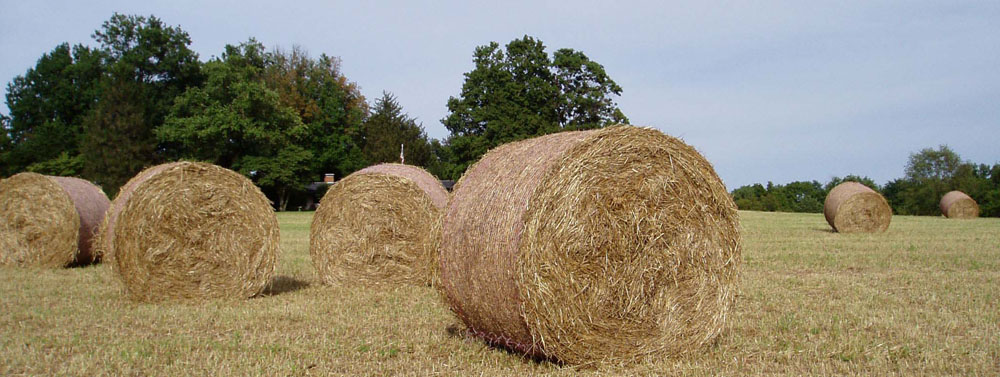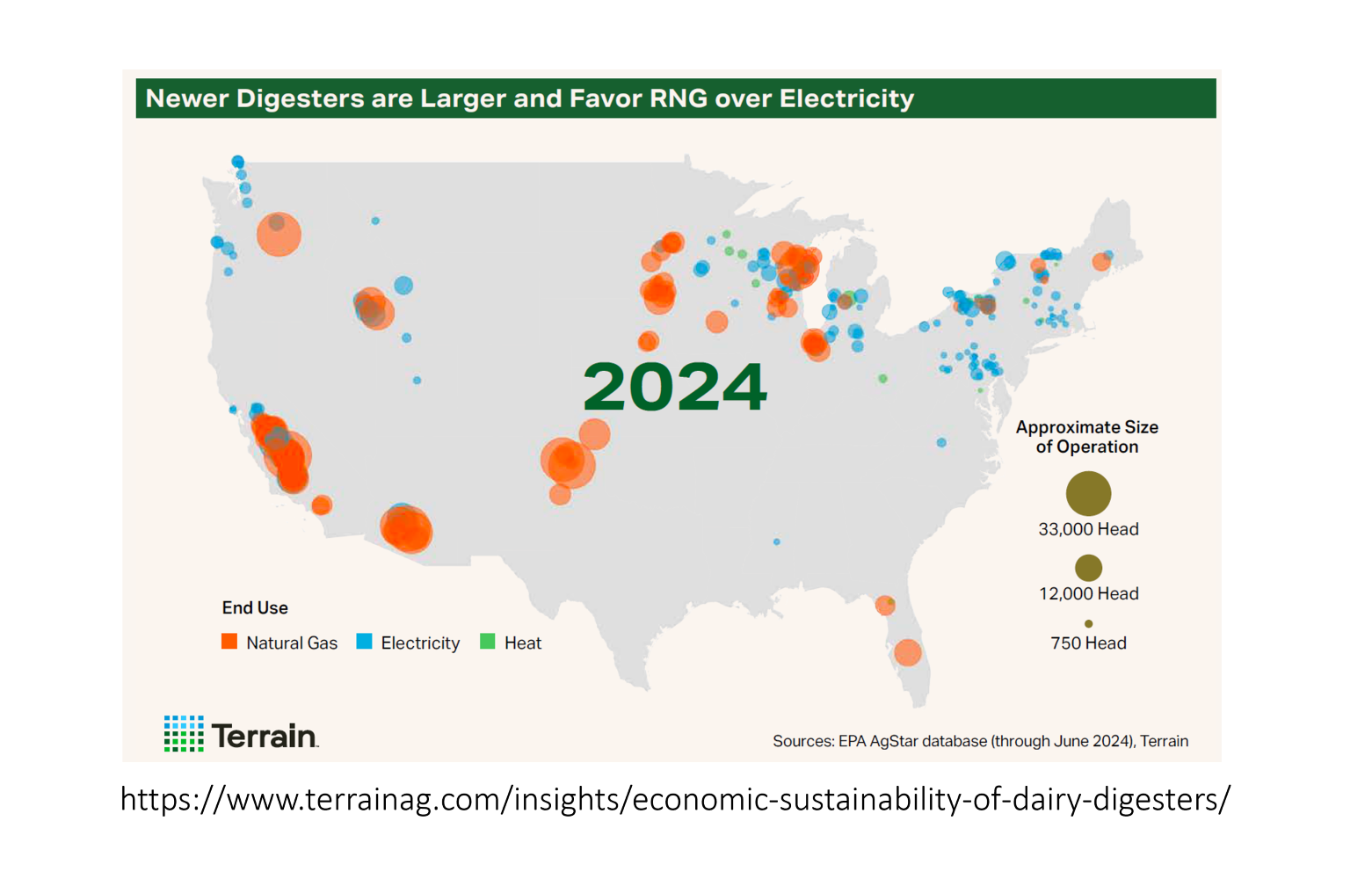Terrain Ag – Economic Sustainability of Dairy Digesters – Making $ense of Energy
Ben Laine, Terrainag.com wrote an interesting report dairy digester sustainability. One graphic message in an animated version of this map shows US dairy digester growth since 2001. Dairy digesters keep growing in size. The most recent digesters dwarf the earlier sized digesters. It is a new era for biologically derived, biogenic natural gas.
One difficult to communicate aspect of biogenic natural gas is that it is derived from ambient CO2. It is not a new addition to atmospheric CO2 like fossil natural gas. In 2025, it is beginning to be recognized as having a premium value for this attribute.
Ben Laine does an excellent job at examining revenue streams from digesters in 2025. He looks at digester revenue from fuel value, LCFS credits, RIN credits, and tax credits. It is worth reading this report if these pathways are not clear to you.
I went back and looked at a successful dairy digester feasibility study I was part of 15 years ago in the ’00s. This was before most of the revenue streams identified by Ben Laine were available. Transportation fuel from biogas was in the pilot phase, so the highest value for biogas as a marketable commodity was as electricity. The area where this vintage digester feasibility study was conducted had access to peak-power pricing. This was premium pricing for electricity production during workday hours.
This is the breakdown of revenue streams from that dairy digester study:
- Electricity sales, 61.0%
- Less direct benefits from power, 3.8%
- Bedding (digester solids) on farm value, 13.8%
- Bedding (digester solids) off farm value, 8.8%
- Fertilizer savings, 9.2%
- Carbon credits, 3.4%
Nearly two-thirds of the digester financing revenue came from power sales. Ben Laine reports that the transportation fuel value is small compared to the benefits from the other three sources today.
Back then carbon credits brought in 3.4 percent of digester revenue. The US voluntary carbon market had just crashed as this vintage study was conducted. Carbon markets were still available in the US, but were brokered from money coming from other nations, mostly Europe.
That left an additional 35 percent of digester revenue from non-biogas markets. It was fascinating to watch the benefits from bedding grow. Using the solids that did not digest, as dairy cow bedding was viewed as superior to other bedding materials and it was a byproduct of running a digester. This meant the pre-digester budget for bedding was zeroed out and became an unmonetizable offset from having the digester on the dairy.
The fertilizer savings in this particular dairy came from not having to haul dairy manure five miles away from the neighbors. The digestate nutrients no longer smelled like manure and could be applied near the dairy. Residential housing had grown to the dairy over the years. The ‘savings’ came from time and fuel in not hauling dairy manure offsite.
Getting a $1 million digester to cash flow in the ’00s took some creativity. I began writing about this excellent terrainag.com article to make a different point. But evaluating the financing cost structure in 2025, I had to go back and look at how that used to happen.
To be clear, it is welcomed news that anaerobic manure and food waste digesters have matured in their market value recognition. But the Terrain report cautions about the clean energy uncertainty emerging in 2025. I hope that digester installers continue to look at non-dollar benefits of system improvements as digester projects are evaluated.
Although not part of the study included here tipping fees for other non-hazardous organic waste streams were an excellent way to add value to farm digesters. These food waste streams often increase biogas output so there was a double bump from the tipping fee plus the additional biogas output.
It is very exciting that twenty years after Biomass Rules operated as a business development service for converting waste liabilities to revenue-generating enterprises, the Renewable Natural Gas (RNG) industry has come into its own as a maturing industry. Great work, everybody!



Comments
Terrain Ag – Economic Sustainability of Dairy Digesters – Making $ense of Energy — No Comments
HTML tags allowed in your comment: <a href="" title=""> <abbr title=""> <acronym title=""> <b> <blockquote cite=""> <cite> <code> <del datetime=""> <em> <i> <q cite=""> <s> <strike> <strong>